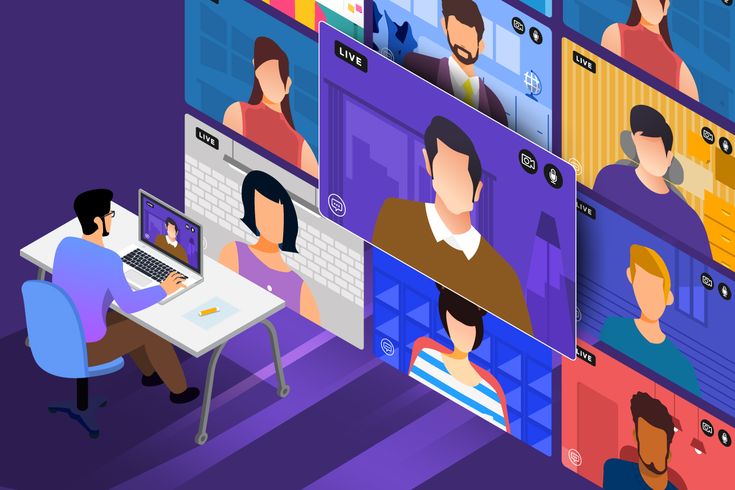Online education has become the norm rather than the exception, and Zoom has emerged as the go-to platform for virtual online classes. Whether you’re a teacher adapting to remote instruction or a student navigating digital learning, mastering Zoom’s educational features can make the difference between a chaotic experience and an engaging, productive classroom environment.

For Teachers: Creating an Engaging Virtual Classroom
Pre-Class Setup and Planning
The foundation of a successful online class starts long before students log in. Teachers should establish a consistent routine that includes testing audio and video quality, preparing screen-sharing materials, and setting up interactive elements in advance. Create a dedicated workspace with proper lighting and minimal distractions, as your environment sets the tone for the entire class.
Consider creating a pre-class checklist that includes updating your Zoom client, testing your microphone and camera, organizing files for screen sharing, and preparing backup plans for technical issues. This preparation time is crucial because technical difficulties during class can derail the learning experience and waste valuable instructional time.
Mastering Host Controls
As the host, you have powerful tools at your disposal that can transform a basic video call into an interactive learning environment. The waiting room feature is particularly valuable for educational settings, allowing you to admit students individually and prevent unauthorized access. Use this time to greet students personally as they enter, creating a welcoming atmosphere that mimics the experience of students walking into a physical classroom.
Mute management is perhaps the most critical skill for educators. Develop the habit of muting all participants upon entry, then strategically unmuting students when they need to participate. The “Mute All” and “Unmute All” buttons become your best friends during larger classes, while the “Allow participants to unmute themselves” setting can be toggled based on the activity at hand.
Interactive Teaching Techniques
Screen sharing goes beyond simply displaying slides. Use annotation tools to highlight important concepts, draw diagrams in real-time, and encourage student participation through shared whiteboards. The spotlight feature allows you to focus attention on specific students during presentations, while the gallery view helps maintain that sense of classroom community by showing everyone simultaneously.
Breakout rooms are revolutionary for group work and collaborative learning. Plan these activities, considering group sizes, time limits, and clear instructions. Move between rooms to provide guidance and support, just as you would circulate in a physical classroom. Remember that students in breakout rooms can’t see or hear the main room, so clear communication about timing and expectations is essential.
Managing Participation and Engagement
The chat function becomes a powerful tool for engagement when used strategically. Encourage students to ask questions through chat, share relevant links, or participate in quick polls. However, establish clear guidelines about appropriate chat use and consider having a teaching assistant monitor chat during instruction to avoid distractions.
Use the “Raise Hand” feature to manage questions and discussions in larger classes. This creates order and ensures all students have opportunities to participate. For smaller classes, consider using the “Reactions” feature to gauge understanding or create quick check-ins throughout the lesson.
For Students: Maximizing Your Learning Experience
Technical Preparation and Etiquette
Students should treat online classes with the same respect and preparation as in-person instruction. This means testing your technology beforehand, finding a quiet space with stable internet, and having backup plans for common issues. Keep your device charged and have a secondary device available if possible.
Develop good digital citizenship habits by muting yourself when not speaking, using appropriate backgrounds or blur features, and dressing appropriately for class. These seemingly small details contribute to a professional learning environment that benefits everyone.
Active Participation Strategies
Staying engaged in virtual classes requires more intentional effort than in-person learning. Position your camera at eye level and maintain eye contact with the camera, not the screen, when speaking. This creates a more natural interaction and helps build connections with classmates and instructors.
Use the chat feature thoughtfully to ask questions, share insights, or provide feedback to classmates. However, avoid private messaging during class unless specifically addressing technical issues with the instructor. The chat history can also serve as valuable notes for later review.
Note-Taking and Organization
Virtual learning requires adapted study strategies. Consider using split-screen functionality to keep notes open alongside Zoom, or use a separate device for note-taking. Many students find that taking notes by hand on paper helps them stay more focused than typing on the same device they’re using for class.
Develop a system for organizing recorded lectures and class materials. Create folders for each class and establish consistent naming conventions for downloaded materials. If your instructor allows recording, use this feature strategically for review, but don’t let it become a substitute for active participation.
Technical Troubleshooting and Best Practices
Common Issues and Solutions
Audio problems are the most frequent disruption in online classes. Students should use headphones or earbuds to prevent audio feedback and improve sound quality. If you’re experiencing echo, the issue is usually someone not using headphones or having their microphone too close to the speakers.
Internet connectivity issues can be minimized by using Ethernet connections when possible, closing unnecessary applications, and informing household members about your class schedule to avoid bandwidth competition. Keep your Zoom client updated and restart it before important classes to ensure optimal performance.
Accessibility and Inclusion
Online learning can be more accessible for some students while creating barriers for others. Teachers should provide multiple ways to participate, including chat, voice, and visual options. Use clear, descriptive language when referencing visual elements, and ensure that shared materials are accessible to screen readers.
Students with accessibility needs should communicate with instructors about specific accommodations and test these features before class begins. Zoom’s live transcription feature can be particularly helpful for students with hearing impairments or those learning in a non-native language.
Building Community in Virtual Spaces
Creating Connection and Engagement
The social aspects of learning are often the most challenging to replicate online. Teachers can foster community by starting classes with informal check-ins, using icebreaker activities, and creating opportunities for students to share personal experiences related to the subject matter.
Consider implementing virtual office hours using Zoom’s scheduling features, and encourage students to use breakout rooms for study groups outside of class time. These informal interactions help build the relationships that make learning more meaningful and enjoyable.
Assessment and Feedback
Online assessment requires thoughtful adaptation of traditional methods. Use Zoom’s polling features for quick comprehension checks, and consider having students present their work via screen sharing for more authentic assessment opportunities. The ability to record presentations allows for more detailed feedback and self-reflection.
Provide timely feedback through multiple channels, including verbal feedback during class, written comments in chat, and follow-up emails. The digital format allows for more detailed documentation of student progress and areas for improvement.
Long-term Success Strategies
Maintaining Motivation and Focus
Online learning requires greater self-discipline and time management skills. Students should establish consistent routines, create dedicated study spaces, and set clear boundaries between school and personal time. The flexibility of recorded lectures can be both a benefit and a challenge, requiring students to develop strong self-regulation skills.
Teachers can support student motivation by maintaining consistent communication, providing clear expectations, and celebrating achievements in virtual formats. Regular surveys about student experience and needs can help identify areas for improvement and ensure that the online format is serving all learners effectively.
Preparing for Hybrid Learning
As education continues to evolve, the skills developed in fully online environments become valuable for hybrid learning models. Both teachers and students should view online learning competencies as permanent additions to their educational toolkit rather than temporary adaptations.
The future of education likely includes continued integration of digital tools and virtual elements, making proficiency with platforms like Zoom an essential 21st-century skill. By mastering these tools now, educators and students are preparing for a more flexible and accessible future of learning.
Conclusion

Successful online education through Zoom requires planning, technical proficiency, and adaptive teaching and learning strategies. While the platform provides powerful tools for virtual instruction, the human elements of teaching and learning remain paramount. By focusing on clear communication, active engagement, and community building, both teachers and students can create meaningful educational experiences that rival and sometimes exceed traditional classroom instruction.
The key to success lies in viewing online learning not as a substitute for in-person instruction, but as a unique educational format with its own advantages and best practices. As we continue to refine these approaches, the potential for innovative, accessible, and effective education through platforms like Zoom will only continue to grow.